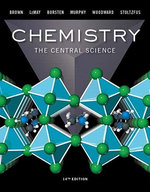(a) What is the relationship between surface tension and temperature? (b) What is the relationship between viscosity and temperature? (c) Why do
Chapter 11, Problem 11.33(choose chapter or problem)
(a) What is the relationship between surface tension and temperature? (b) What is the relationship between viscosity and temperature? (c) Why do substances with high surface tension also tend to have high viscosities?Unfortunately, we don't have that question answered yet. But you can get it answered in just 5 hours by Logging in or Becoming a subscriber.
Becoming a subscriber
Or look for another answer
